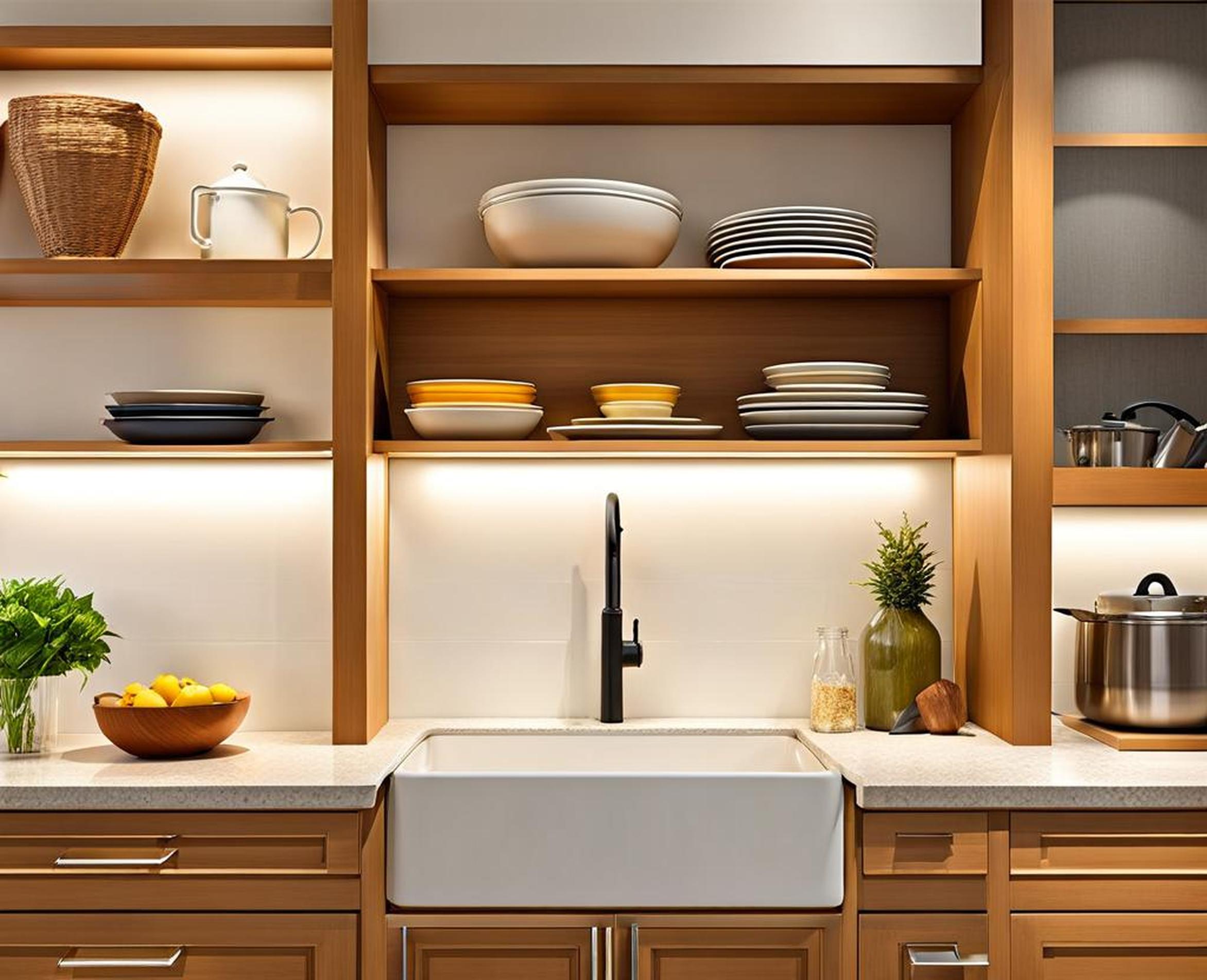Installing shelves and brackets in your kitchen cabinets is a great way to maximize storage space and showcase your style. With so many options to choose from, it can be tricky to select the right shelf brackets for your needs.
When opting for shelf brackets in your kitchen, you first need to decide which type best fits your storage needs and weight requirements. The three main options are floating, standard, and heavy duty. Floating shelf brackets attach directly to the wall to hold up shelves that appear suspended in midair. They work well for lighter items but have weight limits. Standard brackets offer basic support by sitting shelves on top of the metal or wood ledge. These hold light decorations or dishes. Heavy duty brackets are made from steel and can be installed into your wall studs. They hold much higher weight capacities perfect for heavy platters or cookware.
Choosing the Right Brackets
Selecting the ideal shelf brackets involves assessing your available space, weight needs, material and style preferences, and installation abilities. Start by carefully measuring the inside of your cabinet and shelf dimensions to ensure proper fit. Consider the items you want to store on the shelves when gauging required weight capacities. Floating or standard brackets typically hold 15-30 lbs, while heavy duty versions can handle 100+ lbs per bracket. Match your brackets to existing cabinet finishes for a cohesive look, and opt for corrosion-resistant materials if storing wet dishes. Ease of installation is also key. Floating ledges involve simpler installation for DIYers compared to heavy duty brackets anchored into studs.
Measure Available Space
The first step in choosing brackets is taking measurements inside your cabinet. Note the width, height, and depth. Compare this to the product dimensions of shelves and brackets you are considering. Make sure they will fit the space appropriately and allow you to still access existing contents. Having these measurements ensures proper sizing and alignment.
Desired Weight Capacity
Before selecting a shelf bracket, think about what you intend to store. Will they just hold lightweight decor and dishes? Or do you need to support heavier platters, cookware, or appliances? Check manufacturer specs for weight limits per bracket and purchase accordingly. Measuring contents is helpful to understand total weight. Floating shelves commonly hold 15-30 lbs. Standard brackets support 20-50 lbs. Heavy duty versions can handle 100+ lbs per bracket.

Material and Style
Picking bracket materials and style that match your existing cabinetry creates a seamless, built-in look. Metal finishes like black, gold, or nickel pair nicely with handles. For a subtle profile, choose clear acrylic floating ledges. Wood tones complement natural cabinetry. Consider durability and moisture resistance if storing wet dishes. Brackets that resist corrosion will hold up better over time.
Ease of Installation
Assess your own DIY skills and tools on hand for installation. Floating shelves among the easiest brackets to install, only requiring a drill, stud finder, and level. Standard screws into studs or drywall anchors hold them up. Heavy duty brackets are more complex, involving locating studs and pilot holes. If you are less experienced, pick user-friendly floating options.
Installing Shelf Brackets
Once you select the right shelf brackets, it is time to install them properly for optimal support and stability. Carefully follow manufacturer instructions. Safety precautions like finding studs, pre-drilling, and checking alignment are important. Having another person assist can be helpful. The basic process involves gathering supplies, locating studs, attaching to studs, and testing shelves.
Gather Tools and Supplies
For installation, you will need basic DIY tools:
- Stud finder
- Power drill and drill bits
- Level
- Pencil
- Screws or mounting hardware
Also gather your chosen brackets, shelves, and have your cabinet measurements handy.
Find and Mark Stud Locations
Locate the studs using a finder, marking their centers with pencil. Studs provide the strongest anchoring points for brackets. Mark level lines for drilling and attaching screws. Having a friend help with marking is useful.
Follow Manufacturer Instructions
Refer back to the specific installation directions included with your brackets. Follow weight capacities and hardware requirements. Pre-drill holes for screws. Ensure you are attaching into studs properly and that brackets are level and aligned. Recheck the lengths and locations as you install.
Add Desired Shelving
Once brackets are firmly attached, you can add shelves. Test stability before loading up contents. Usually sliding shelves into ledge brackets or resting them on standard brackets is simple. Then organize your dishes, cookware, and decor onto your new storage!
Style Your New Shelves
Now comes the fun part – styling your shelf brackets and organizing your essentials. Keep things grouped together, with frequently used mugs and plates near the front. Incorporate your decor style with accent pieces and pops of color. Here are some tips for styling your new pantry shelves:
Organize Contents
Keep things you use most regularly right up front for easy access. Group like items, such as mugs, bowls, and plates. Consider stacking to save space while displaying favorites. Keep lesser used items towards the back.
Add Pops of Color
Solid colored dishes or bright accent pieces pop against a neutral shelf background. Introduce your color palette through dishware, cookbooks, or containers. Vivid reds, blues, and greens stand out while complementing other tones.
Incorporate Decor
Weave in decor elements to personalize your shelves. Fresh greenery, framed family photos, woven baskets, and colorful ceramic pieces enhance the look while reflecting your style. Floating shelves can hold vases, plants, and artwork.
Installing shelf brackets opens up kitchen cabinet storage and display possibilities. Start by measuring your space and identifying weight requirements. Choose bracket material and styles to match your existing decor. Opt for heavy duty brackets to hold heavier dishes and cookware. Follow installation instructions carefully. Then organize contents in a practical yet stylish manner. With the right brackets and styling, your kitchen can gain both function and flair.
